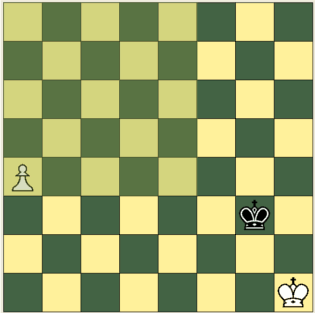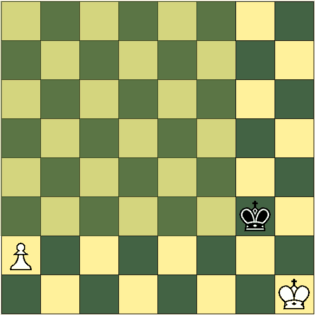In my first video on the square of the pawn, I mentioned an important warning about how to calculate the square when the pawn is on its home square. I mentioned it in the video — but failed to mention it in the blog post; so I’m remedying that omission now.
When the pawn stands on its home square, you must imagine the square of the pawn as if it were standing on its third rank instead of its second. The reason for this is that the Pawn can move two squares for its initial move. That being the case, the square of the pawn must account for the two-step move.
For example, if White’s a-pawn stands on a4, the square of the Pawn is drawn with the Pawn standing at the lower-left corner of the square, as in the following diagram.
But if the a-pawn stands on a2, the square of the Pawn is drawn as if the Pawn stands on a3.
Knowing the rule for the square of the Pawn is extremely useful in calculating endgames, but you must keep in mind the possibility that a Pawn on its original starting square may move forward two squares on its first move.


